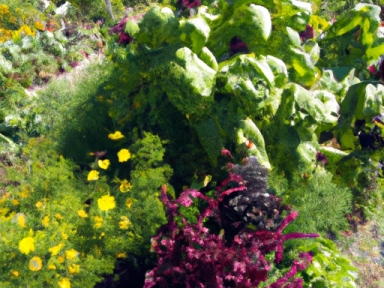Companion Planting: The Key to Optimize Plant Growth in a Crisis
In times of crisis or disaster, access to fresh food becomes more challenging. That’s why it is crucial to be prepared and learn self-reliance skills, such as gardening and homesteading. One practice that can significantly enhance your chances of success is companion planting. This age-old gardening wisdom is based on the idea that certain plants can support and benefit each other when grown together. By implementing companion planting techniques, you can optimize plant growth, improve soil health, and increase your overall self-sufficiency.
The Benefits of Companion Planting
Companion planting offers a range of advantages, making it an essential part of any self-reliant homesteader’s toolkit. Here are a few reasons why you should consider implementing this technique:
- Pest control: Certain plants have natural pest-repellent properties. By interplanting these crops with your vulnerable plants, you can deter pests without relying on harmful chemicals. For example, planting marigolds alongside your tomatoes can help repel nematodes.
- Improved soil: Different plants have different nutrient requirements. Planting certain crops together can enhance nutrient uptake and prevent nutrient depletion. For instance, coupling nitrogen-fixing legumes, such as beans or peas, with nutrient-hungry crops like corn can improve soil fertility.
- Enhanced pollination: Bees and other pollinators play a crucial role in plant reproduction. By growing companion plants that attract pollinators, you can increase the likelihood of successful cross-pollination and higher yields.
- Space-saving: Companion planting enables you to make the most of limited space. By intercropping, you can grow multiple crops together, maximizing productivity and optimizing land usage.
Common Companion Planting Combinations
Now that you understand the benefits of companion planting, let’s explore some tried-and-true plant combinations:
Tomatoes and Basil:
Tomatoes and basil are a match made in the garden. Basil acts as a natural pest deterrent and can help repel tomato hornworms. Additionally, the aromatic oils released by the basil plant can enhance the flavor of neighboring tomatoes.
Corn, Beans, and Squash:
The Three Sisters planting method is a classic example of companion planting. Corn provides support for the climbing beans, which, in turn, fix nitrogen in the soil. The large squash leaves act as a living mulch, preventing weed growth and retaining moisture.
Carrots and Onions:
Carrots and onions go together both in the kitchen and the garden. Onions repel carrot pests, such as carrot flies, while carrots deter onion pests like onion flies. Planting these two vegetables together can help protect each other from common garden pests.
Tips for Successful Companion Planting
While companion planting has numerous benefits, it’s essential to follow a few guidelines to ensure success:
- Consider plant compatibility: Not all plants make good companions. Some plants compete for resources or release chemicals that inhibit the growth of other plants. Research and plan your companion planting combinations accordingly.
- Practice crop rotation: To prevent soil depletion and pest buildup, it’s crucial to rotate your crops each season. Avoid planting crops from the same family in the same bed year after year.
- Provide adequate spacing: Each plant has specific spacing requirements. Overcrowding can lead to reduced air circulation and increased disease susceptibility. Be sure to give your companion plants enough room to thrive.
- Maintain good garden hygiene: Regular weeding, proper watering, and removing dead or diseased plants are vital for maintaining a healthy garden environment. This practice helps prevent the spread of pests and diseases among your companion plants.
By implementing these tips and experimenting with different companion planting combinations, you can enhance your garden’s productivity and resilience. As a self-reliant homesteader, it’s essential to maximize your resources and ensure food security, especially in times of crisis or uncertainty.
Remember, being prepared is not just about having food storage or survival gear; it’s about acquiring the knowledge and skills necessary to create a sustainable and resilient lifestyle. Incorporating companion planting into your gardening practices is a valuable step towards achieving self-reliance and increasing your chances of survival in any challenging situation.




GIPHY App Key not set. Please check settings